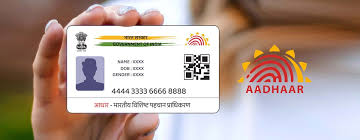
Aadhaar Gets a Face-Lift: New App Brings Smart Digital Identity Verification
In a significant step towards paperless identity verification, the Unique Identification Authority of India (UIDAI) has launched a revamped Aadhaar app that uses facial recognition. With this move, users can now prove their identity using just their smartphone—no need to carry a physical Aadhaar card or share photocopies anymore.
Unveiled during the Aadhaar Samvaad 2025 event in Delhi, the new app offers secure and consent-based face authentication, promising to make digital ID verification faster and smarter.
What’s New in the Aadhaar App?
The redesigned app features a sleek interface and uses a smartphone camera for face-based authentication. Once the app is set up, it can verify a user’s identity through a QR code scan—without storing or sharing any sensitive details with third parties.
When a service provider, such as a hotel or store, asks for ID verification, the app prompts users to enter a PIN and scan the QR code. A masked digital Aadhaar card then appears on the screen. If the user consents, they can go ahead with face authentication. The app uses a blinking test to confirm the person’s presence and identity, adding an extra layer of security.
Why This Matters: The Push Towards Paperless Verification
This move could make everyday processes like hotel check-ins or mobile SIM activation much simpler. You won’t have to submit photocopies of your Aadhaar anymore. Instead, you use your smartphone for fast and secure verification.
However, there’s more to it than just convenience. This change reflects a bigger shift in India’s digital infrastructure—where biometric security is playing a central role in how identities are verified and protected.
Concerns Around Biometric Use
While the technology feels futuristic, concerns around data security remain. Biometric information—like face scans, fingerprints, or iris data—cannot be changed like passwords. If this data is ever leaked or misused, the risks are long-term and serious.
Experts warn about storing such sensitive data on centralised servers, even if it’s encrypted. If hackers access this information, the consequences could be severe. The UIDAI, however, assures that the app shares no data without a user’s consent, and it’s designed to prevent any kind of forgery.
UIDAI’s Cautious Rollout Strategy
For now, the updated Aadhaar app is available only to a limited group of testers. This trial phase will help UIDAI gather feedback before a broader rollout. It also gives ecosystem partners—like telecom companies, banks, and government agencies—a chance to integrate the new system smoothly.
How to Use the New Aadhaar App
Setting up and using the app is simple:
- Download the app from the official UIDAI website or app store (once publicly available).
- Register with your Aadhaar number and set a secure PIN.
- When asked for ID verification, open the app and enter your PIN.
- Scan the QR code presented by the service provider.
- Position your face in the circle and blink when prompted.
- If verified, a message will confirm your identity has been authenticated.
This process allows users to complete identity checks in seconds—no physical documents involved.
What Lies Ahead
This app could reshape how Aadhaar is used daily, making it more secure, paperless, and mobile-first. But to ensure public trust, UIDAI must balance innovation with privacy. It will be crucial to watch how the app performs during the test phase, especially with concerns around facial data safety and real-time processing.
The Aadhaar app is more than just a tech update. It’s a signal that India is inching closer to seamless digital governance, where smartphones become the new wallet, ID, and key to access services.
